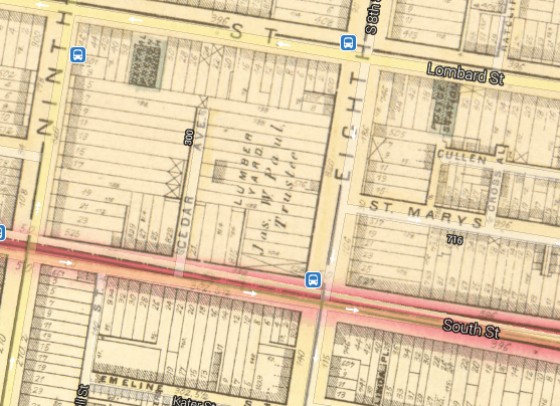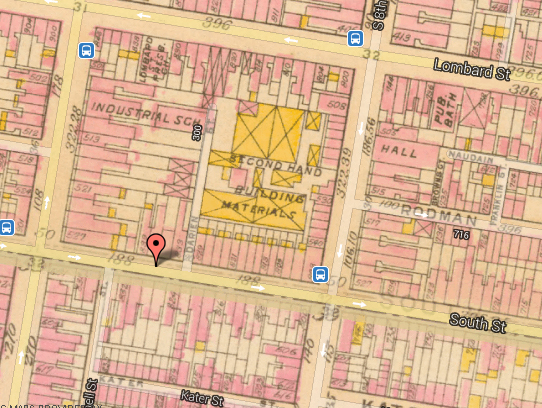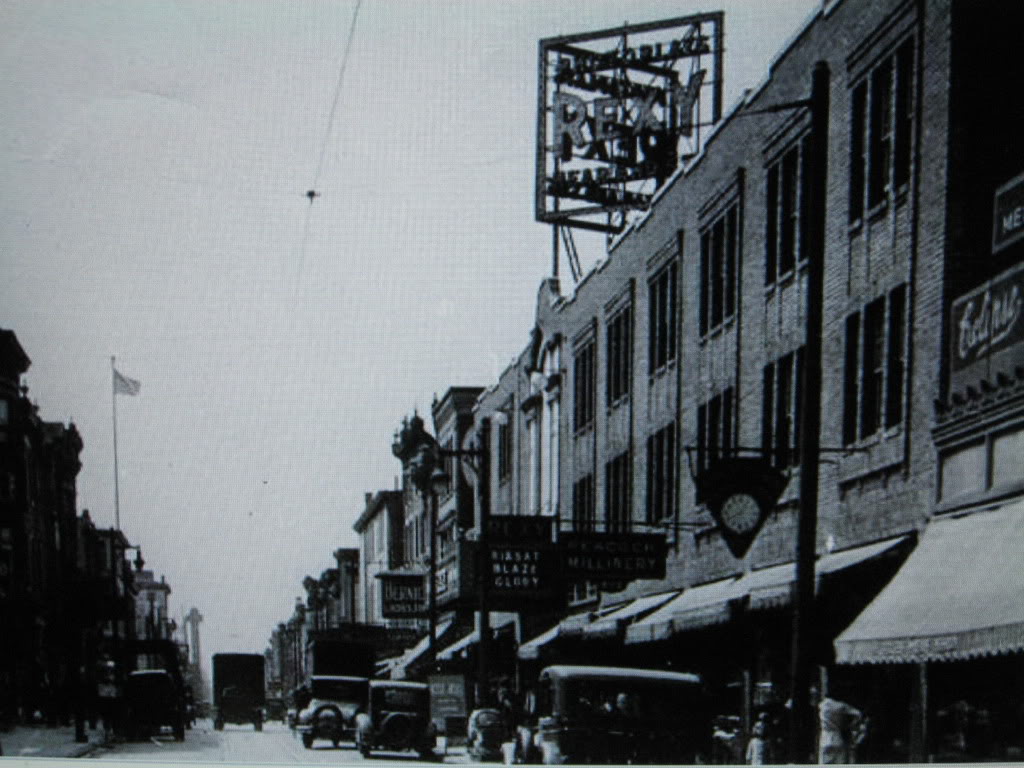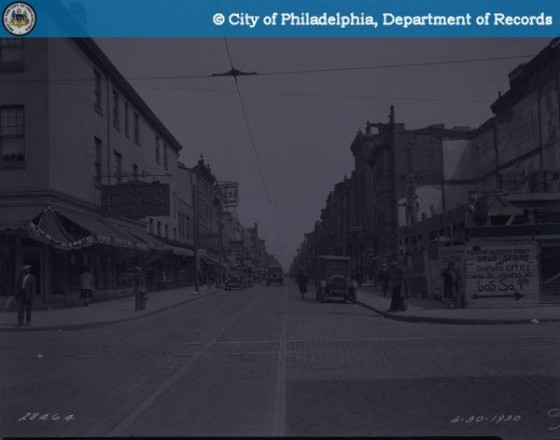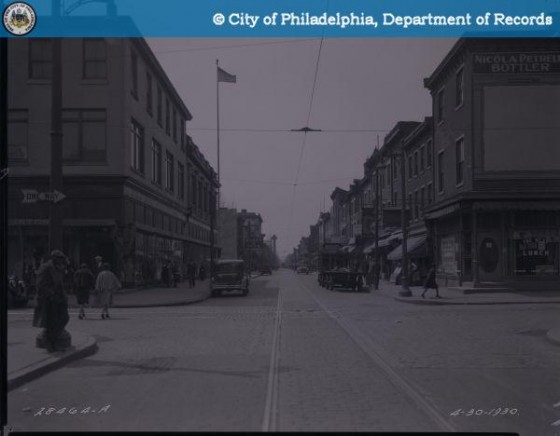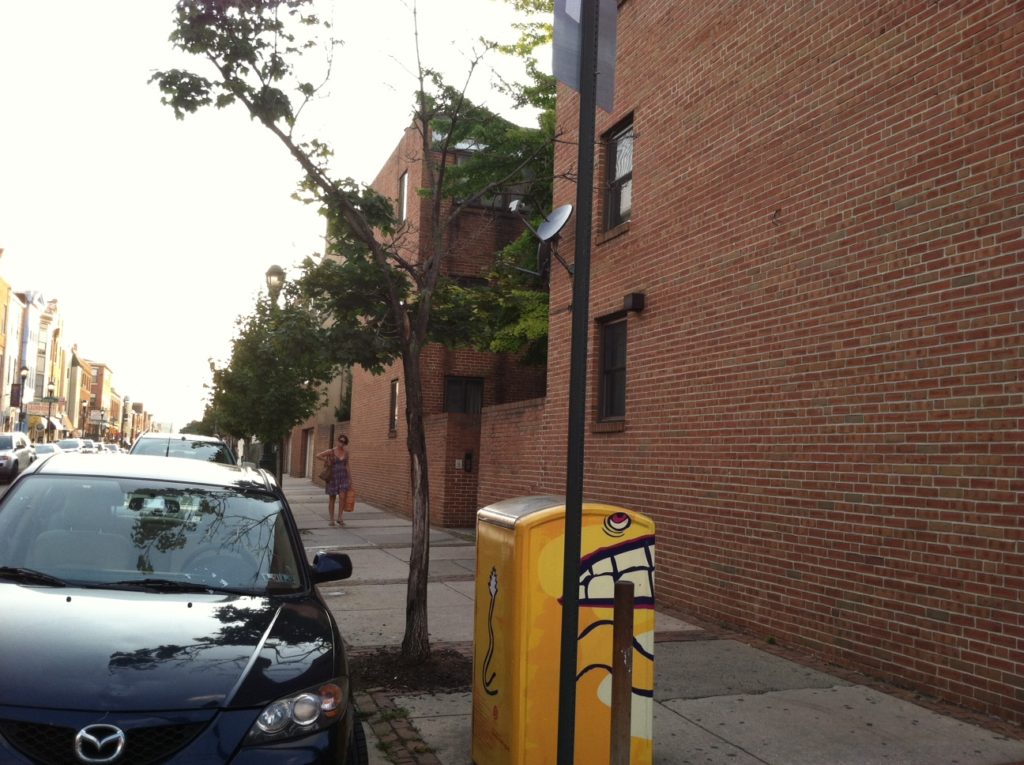Listed at 819 South St., the parcel on the north side of the constantly changing commercial thoroughfare is today a set of residential units. But the lot’s history says that the location has seen plenty of change along with its contextualizing street. Indeed, in an era when South Street was populated by building suppliers and industrial facilities, the lot in question directly reflected its surroundings. The image here below, taken from the G.M. Hopkins’ 1875 Philadelphia Atlas, identifies the space as a lumber yard managed by the Jas. W. Paul Trustees.
The map also shows that at this time, the small north-south stretch running parallel to the west end of the lumber yard was known as Cedar Ave. According to Wikipedia, this name is a vestige of William Penn’s original city plan, which gave the name of Cedar to what is now South Street. By the turn of the century, Cedar had become Darien and the lumber yard had transitioned into a salvage business. In 1910, the space was being used as an outlet for ‘Second Hand Building Materials,’ as shown in the image here below from G.W. Bromley’s Philadelphia Atlas from that same year.
The Second Hand store does not appear to have lasted too long. According to Cinema Tour, the Rexy theatre was opened in this location on October 15th, 1927 and offered a seating capacity of 1800. The exterior of the theatre is shown here below in a photo borrowed from Cinema Treasures.
Interestingly, several online sources list the theatre’s address as 517 South Street, but this appears to conflict most cartographic records, which instead show the theatre bound between 8th, Darien, South and Lombard Streets. The Philadelphia Department of Records provides the photos below, which show the 800 block of South Street in 1930.
The Rexy Theatre would prove something of a contradiction, far exceeding the life expectancy of many of its contemporaries but by some reports, generally underperforming in its neighborhood. An unsourced comment at Cinema Treasures suggests that the theatre was closed much of the time because it was frequently unable to fill its large number of seats. Through the 1960s, the theatre remained in place as a relic to the now long-gone Golden Age of cinema. But by 1975, the theatre would experience the same fate as so many other Philadelphia movie houses. Shortly after its demolition, the apartment units that now occupy the space would be erected. They are shown here below as they appear today.
–David Tomar

